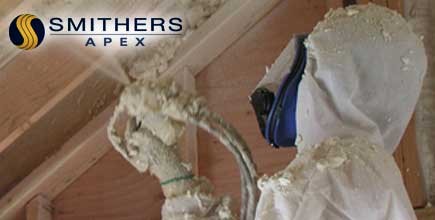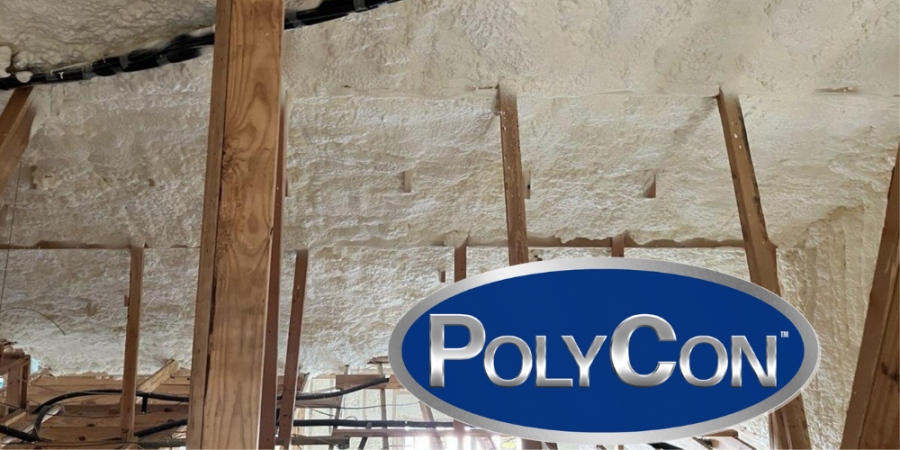Smithers Apex Discusses Key Factors Affecting The Sustainable Insulation Market

SURREY, U.K. – April 24, 2014 – The insulation market has seen steady growth in demand over the past decade, increasing on average by just under 3 percent annually between 2000 and 2010. The global market for thermal insulation materials totalled 37.1 million tonnes in 2012, worth an estimated $84.4 billion, including materials used in wall, floor, and roof applications. This is expected to pick up further over coming years. Smithers Apex outlined the main trends and drivers in the global sustainable insulation market.
1.) Building Codes and Regulations
Various international building codes and regulations are the main influence on demand for insulation materials. While these regulations act as a catalyst for growth on the one hand, they restrict the use of certain materials in specific applications on the other. The introduction of new codes can have a marked effect on the insulation market and is expected to do just that in Russia and Mexico over the short to medium term, though quantifying this effect is a highly speculative exercise.
2.) Construction of New Buildings
The effects of the global recession on new building construction are also evident, especially in the U.S. and Spain, as is the recovery shown in many countries during 2011 and 2012, with the exceptions of France, Spain and the U.K. in 2012. While no reliable predictions are available, the general opinion in the insulation industry is that a recovery is underway in most regions, with the exception of Spain, whose construction industry remains in the doldrums.
According to data compiled by Euromonitor during 2012, home ownership tends to follow a pattern of growth somewhere between population growth and urbanization. While the historical trend indicates a slight slowdown from 2011 onwards, there is nevertheless a continuing growth in global home ownership, which for the insulation market indicates a positive trend, as homeowners tend to be more prone to investment in insulation than tenants.
3.) Population Growth and Urbanization
According to the latest predictions, the worldwide population is growing at a rate of 1.2 percent annually from 2000 to 2018, and is set to reach over 7.5 billion by 2018. Although the Asia-Pacific region accounts for the majority (55 percent) of the 2012 population, the highest growth rates will be seen in Africa and the Middle East.
Most importantly in terms of sustainable insulation, however, is that the global population is not only growing, but is moving from the countryside to the towns and cities, stimulating demand for housing and associated infrastructure and services. Just over half of the global population can now be said to be urbanized and this is expected to grow on average by almost 2 percent annually over the medium term, based on the latest statistics available from the CIA World Fact Book.
4.) Energy Costs
Energy costs are another significant driver of the consumption of insulation materials. Energy costs are widely accepted as the prime motivator amongst consumers to see their homes insulated, though cost comes into it as well, especially in less affluent communities. This is also true of production costs, of which energy often constitutes a large proportion, especially in the glass and mineral wool market, which uses considerable amounts of energy in furnaces and ovens.
In this regard, the development of shale gas as a feedstock for many monomers and polymers is seen as a significant opportunity for the insulation market on the one hand, as it will help to hold down production costs. However, the potential dampening of household heating costs will have a consequent negative effect on insulation demand, as it will reduce the incentive for householders to insulate, to some extent.
The volatility of oil prices contributes towards the encouragement for consumers to improve insulation, partly as a result of uncertainty over future fuel price rises, and partly due to the perceived (if not real) belief that oil price reductions seldom find their way through to the consumers' heating bills.
5.) Sustainability
Sustainability is the major force behind the development of new technologies, however there is no easy answer to the complex issue of sustainability of insulation materials. Even the typically 'black sheep' oil-based materials offer a degree of sustainability when measured against competing materials in cradle to grave lifecycle analyses. In fact, it is not correct to assume that natural fibers such as hemp or sheep's wool will be automatically more sustainable than, say, expanded polystyrene rigid boards.
Broadly speaking, insulation is expected to save up to twelve times as much energy in its first year of insulation, regardless of the material used.
For more information the sustainable insulation market, download Smither Apex's report, "The Future of Sustainable Insulation to 2018," provided on the link below.
About Smithers Apex: Smithers Apex provides events, market research, publications, strategic and technical consulting to niche, emerging and high growth industries. Markets covered include lighting and displays, clean energy, home and personal care, industrial biotechnology, performance materials and chemicals. For more information on Smithers Apex, please use the contact information and link provided below.
Disqus website name not provided.









































